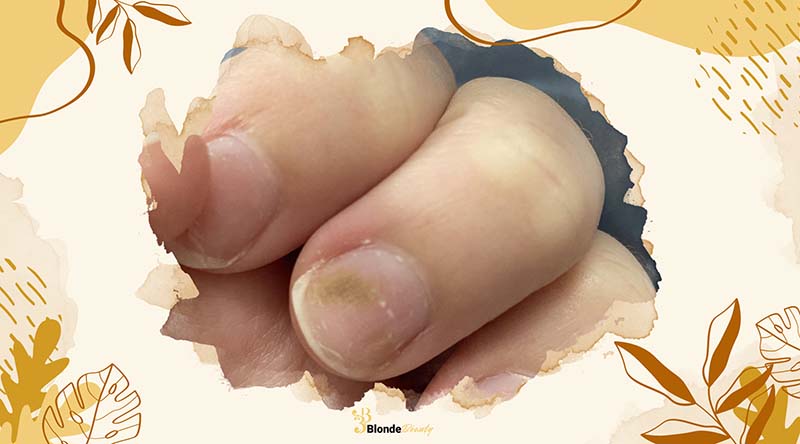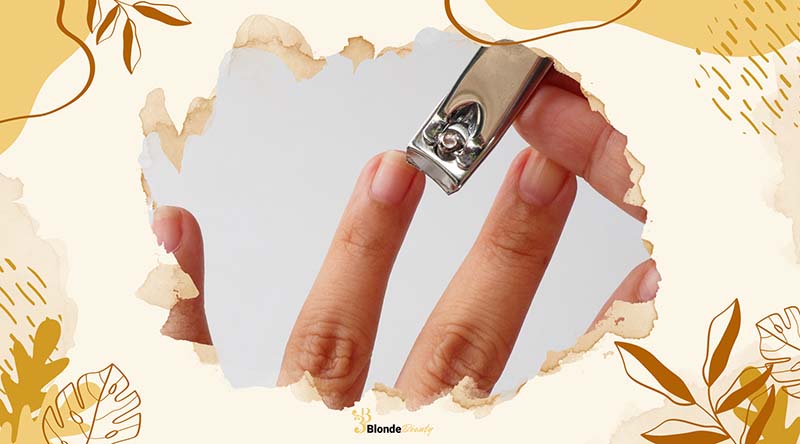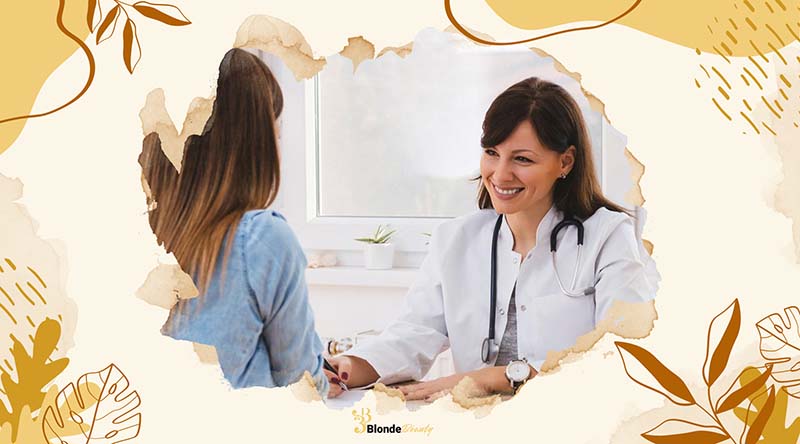Encountering greenish discoloration on your natural nails after removing acrylics can be disheartening, but fear not! We have the perfect guide to help you bid farewell to those green nails. And if all else fails, there’s always the option of using false toenails or fake nails.
Let us first explore what causes this green fungus under acrylic nails and how to address it.
You should also read the following articles:
- How to Heal a Bruised Toe Nail: Expert Tips for Swift Recovery
- How Long Does It Take for a Big Toe Nail to Grow Back? Insights
What Is Green Fungus Under Acrylic Nail?
Green nails occur when fungus builds up underneath an acrylic nail. This greenish discoloration is typically caused by a bacterium known as Pseudomonas aeruginosa, commonly found in both fresh and saltwater environments. Places like swimming pools, hot tubs, bathtubs, and showers are common breeding grounds for this bacteria.
Pseudomonas aeruginosa thrives in moist environments with limited air circulation, making it prone to grow under false nails, similar to how moss develops in an uncleaned fish tank.

Why Is There a Green Spot on My Nail?
Nail fungal infections are prevalent among individuals with acrylic nails, constituting over 50 percent of all nail disorders. In a study involving 68 women who experienced nail issues post-acrylic nail removal, a staggering 67 of them were diagnosed with fungal infections.
Acrylic nails are affixed to natural nails using adhesive. If they loosen or are not applied correctly, moisture can become trapped between the acrylic and natural nails. This trapped moisture creates an ideal environment for fungal growth.
Dermatophytes, a group of fungi, are the primary culprits behind nail fungal infections, with Trichophyton rubrum being a particularly common offender.
Symptoms of Fungus on Fingernails from Acrylic Nails
Initially, a fungal infection from acrylic nails may manifest without noticeable symptoms. However, as the infection advances, you may observe:
- Brittle or thickened nails
- Unpleasant odor emanating from the nail
- Pain and tenderness, particularly when applying pressure to the nail
- Discoloration of the nail, appearing yellow, green, black, or white
- Itchiness
- Redness
- Swelling
How to Get Rid of Green Nail Fungus from Acrylic Nails
When dealing with green nails, it’s essential to remove the remaining gel or acrylic to assess if other nails are affected. The bacteria responsible for the green discoloration can be effectively eliminated with alcohol, simplifying the treatment process.
Although the green stain may persist, rest assured that the bacteria causing it are eradicated, rendering it non-contagious.
However, it’s advisable to seek medical attention if the green nails are accompanied by conditions like Onycholysis (nail detachment) or ingrown nails, or if you notice other nail abnormalities. Individuals with weakened immune systems, underlying health conditions, or advanced age should consult a doctor promptly upon noticing any nail irregularities.
Preventing Acrylic Nail Fungus
To prevent acrylic nail fungus, it’s crucial to follow these steps:
- Begin with clean, dry nails before applying acrylics. Inspect your hands and feet for any signs of infection, and promptly treat any cuts to prevent bacteria from entering.
- During the application process, avoid prolonged soaking of false nails in water, as this can create an environment conducive to fungal growth underneath them. When engaging in activities involving water exposure, such as swimming or spa treatments, wear gloves and take extra care when drying your hands.
- Regularly trim your nails to prevent the accumulation of bacteria. After filing, disinfect the nail area with an antifungal agent like tea tree oil to further safeguard against fungal infections.

Other Risks Posed by Acrylic Nails
While many individuals who opt for acrylic nails won’t encounter serious issues, it’s essential to be aware of potential risks associated with their use:
- Allergic reactions and eczema: Some people may develop contact dermatitis, a form of eczema, in response to acrylic nails or the adhesive used to apply them. A 2022 study linked acrylic nail exposure to hand eczema, affecting both nail users and beauty professionals. Symptoms may include redness, itching, peeling, cracking, or dryness. Seeking medical advice is crucial for proper treatment and potential avoidance of acrylic nails.
- Nail damage: Acrylic products can harm natural nails, leading to “worn-down nail syndrome” characterized by nail thinning post-acrylic use and filing. Onycholysis, where nails detach from the nail beds, and red, thickened skin around the nails are potential complications, as highlighted in a 2020 case study.
- Other safety concerns: Acrylics possess flammable properties, necessitating caution during wear. Individuals with acrylic nails may be prone to picking at them, risking damage to the natural nail plate and thinning of nails. This behavior could also result in nail flaking or surface pits.
Staying informed about these potential risks empowers individuals to make educated decisions regarding acrylic nail use and prioritize nail health and safety.
Can I Still Go to Get My Nails Done If I Have Green Nails?
If you have green nails, it’s advisable to consult with salon staff before proceeding with nail services. In most cases, they will likely suggest removing the existing gel without applying a new one. To maintain hygiene standards, they’ll use dedicated tools for the removal process.
Salons typically adhere to strict hygiene protocols, including disinfecting nippers and tools after each client to prevent cross-contamination. This ensures a safe and sanitary environment for all customers.
When to See a Doctor?
While many nail fungal infections resolve with home remedies, seeking medical attention is advisable under certain circumstances:
- Ineffectiveness of home remedies: If home treatments fail to alleviate the fungal infection or if it persists despite your efforts, consulting a doctor for prescription antifungal medication is recommended.
- Persistent discomfort: If the fungal infection causes significant discomfort or pain, a medical evaluation can provide relief through appropriate treatment.
- Immunocompromised individuals: People with weakened immune systems, such as those who are immunosuppressed, should promptly seek medical care for nail fungal infections. Prompt treatment can help prevent the development of more serious infections in this vulnerable population.
By consulting a doctor when necessary, you can ensure proper management of nail fungal infections and minimize associated complications.

Conclusion
In conclusion, dealing with green fungus under acrylic nails, caused by Pseudomonas aeruginosa, requires prompt and effective treatment. If symptoms persist despite home remedies, consulting a healthcare professional is essential.
To prevent green fungus under acrylic nails, keep your nails dry and clean, and limit exposure to moisture. Proactive nail care and timely medical intervention are key to maintaining healthy nails and preventing future infections.
For more insightful articles on health and wellness, be sure to explore additional blogs from Blonde Beauty.

Laureate Professor Clare Collins
Professor Clare Collins is a leading expert in nutrition and dietetics at the School of Health Sciences, part of the College of Health, Medicine and Wellbeing. Her work is changing the way we think about food and health. She grew up as one of nine children and was the first in her family to finish high school and go to college. This background gave her a strong work ethic and a deep appreciation for seizing opportunities.
As the Director of the Hunter Medical Research Institute’s Food and Nutrition Program and a recipient of three NHMRC Research Fellowships, Professor Collins is making a big difference in public health. She focuses on helping people who are often overlooked, using new technologies like apps and online programs to improve their nutrition and reduce the risk of chronic diseases.
Professor Collins is well-respected and has been recognized as a Fellow in four major health and science organizations. She leads a diverse team of experts, including dietitians, computer scientists, and engineers, working together on global health projects.
Her achievements are impressive. She has received over $29 million in research funding, published more than 450 papers, and helped 35 PhD and Master’s students complete their degrees. She’s also active in sharing her knowledge with the public. She has developed tools like the Australian Eating Survey and the Healthy Eating Quiz, and she often appears in the media to talk about nutrition.
PUBLISHED ARTICLES
- Collins, C. (2019). “The Effect of a Pilot Dietary Intervention on Pain Outcomes in Patients Attending a Tertiary Pain Service.”
- Collins, C. (2022). “Variation in cardiovascular disease risk factors among older adults.”
- Collins, C. (2022). “Evaluation of an online intervention for improving stroke survivors’ health-related quality of life: A randomised controlled trial.”
These articles show Professor Collins’s commitment to understanding how better nutrition can improve health. Her work is important for researchers, doctors, and anyone interested in healthy living.
